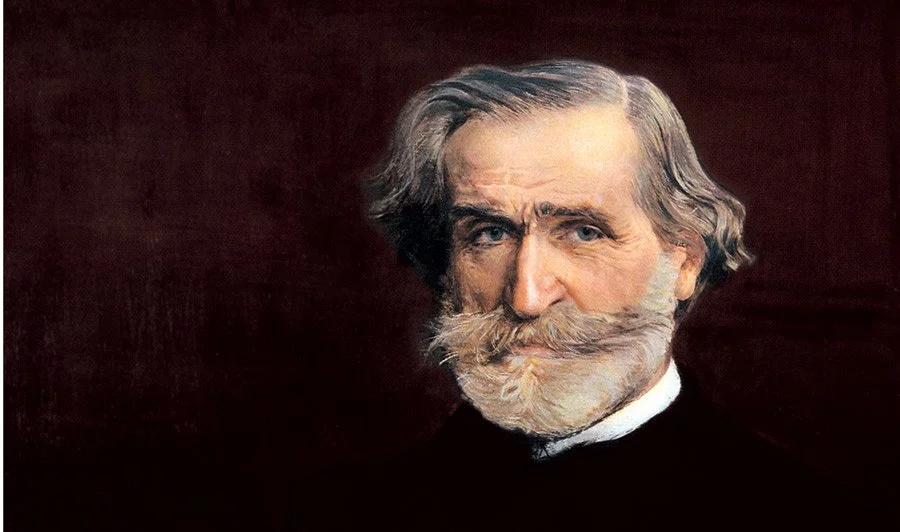Giuseppe Verdi | Ave Maria Antiphon
The Ave Maria antiphon is recited and sung throughout the liturgical year in the Roman Catholic tradition. But it is also more specifically used during the Advent/Christmas season by Christians of all denominations, because it presents Mary’s realization that she is to become the mother of Jesus. Chicago Chorale performs at least one setting of this text every year on our Christmas concerts.
The antiphon’s text is divided into three parts. The first part consists of the Angel Gabriel’s greeting to Mary when he announces to her that she will bear a son: “And the angel came in unto her, and said, Hail, thou that art highly favored, the Lord is with thee: blessed art thou among women” (Luke 1:28). The second part is the greeting of her cousin Elizabeth, whom she has come to visit while pregnant: “And Mary entered into the house of Zacharias, and saluted Elizabeth. And it came to pass, that, when Elizabeth heard the salutation of Mary, the babe leaped in her womb; and Elizabeth was filled with the Holy Spirit, and cried out, saying, Blessed art thou among women and blessed is the fruit of thy womb” (Luke 1:49-42). The third part, “Holy Mary, Mother f God, pray for us sinners, now and at the hour of our death,” is not scriptural, but was added in the 15th century.
This year, Chorale is singing a setting by Giuseppe Verdi (1813-1901), who composed it very late in his life (1889), after a career spent composing operas. It was eventually published with three other sacred choruses in Quattro pezzi sacri (Four sacred pieces), Verdi’s last major work, in 1898. Verdi did not want the Ave Maria to be performed with the other pieces, which received their premier in Paris in April 1898; but he relented later on, and the four pieces were presented as a unified work in November of that year.
Verdi was recognized in his own time, and he is in ours, as one of the most important opera composers in music history. His non-operatic compositions are few in number, and the most famous of them, his Requiem, is often referred to as an ecclesiastical opera. But his early musical training and experiences were through his parish church, where he learned to play the organ at a very young age, sang in the choir, and served as an altar boy. At the age of eight, he became the official paid organist. He turned from church music to opera in his later teens, however, and was described by his second wife as being not particularly religious.
Verdi was inspired to compose Ave Maria by the enigmatic scale C – D-flat – E – F-sharp – G-sharp – A-sharp – B – C, which Adolfo Crescentini published in Ricordi's magazine Gazetta musicale di Milano in 1889, inviting composers to harmonize it. Verdi composed a setting for four unaccompanied voices, with the bass singing the scale first, followed by alto, tenor and soprano, the three remaining voices supplying harmonic texture. Though originally intended for a quartet of soloists, the work has, from its first performance, been performed by choirs. The work’s demands are daunting: the chromatic harmonic language makes it very difficult to sing in tune, and the extreme dynamic range is difficult to navigate. I first sang it under the baton of conductor Robert Shaw, and the scores Chorale sings from contain his detailed, precise notations, designed to help the singers stay in tune.

